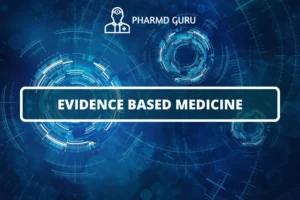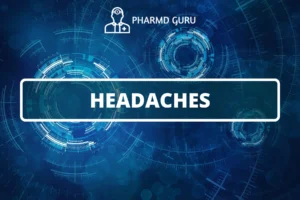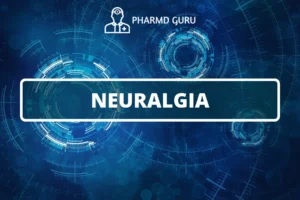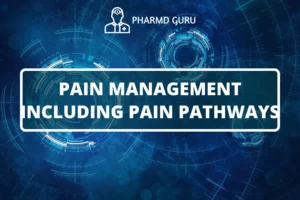Venous thromboembolism (VTE) is a condition characterized by the formation of blood clots, usually in the deep veins of the legs (deep vein thrombosis) or the lungs (pulmonary embolism). It is a potentially serious medical condition that requires prompt diagnosis and appropriate treatment. Understanding the etiopathogenesis, or the underlying causes and mechanisms, of VTE is essential for its management. In this article, we will explore the etiology of VTE, the pathophysiological processes involved, and the pharmacotherapy options used in its treatment.
SCROLL DOWN TO THE BOTTOM OF THIS PAGE FOR ACTUAL NOTES.
Table of Contents
- Introduction
- Understanding Venous Thromboembolism
- Etiology of Venous Thromboembolism
- Pathophysiology of Venous Thromboembolism
- Clinical Presentation
- Diagnostic Approaches
- Treatment Options
- Pharmacotherapy for Venous Thromboembolism
- Supportive Care
- Prevention and Risk Minimization
1. Introduction
Venous thromboembolism is a significant medical condition associated with the formation of blood clots in the veins, most commonly in the deep veins of the legs. It can lead to serious complications if not diagnosed and treated promptly. Understanding the etiopathogenesis and available pharmacotherapy options is crucial for managing venous thromboembolism effectively.
2. Understanding Venous Thromboembolism
Venous thromboembolism encompasses two interrelated conditions:
- Deep Vein Thrombosis (DVT): DVT occurs when blood clots form in the deep veins, typically in the legs or pelvis.
- Pulmonary Embolism (PE): PE occurs when a blood clot dislodges from its site of origin, travels to the lungs, and blocks the pulmonary arteries.
VTE is often the result of multiple risk factors acting together.
3. Etiology of Venous Thromboembolism
Venous thromboembolism can occur due to various factors, including:
- Prolonged immobility: Extended periods of immobility, such as during long flights or hospitalization, can increase the risk of blood clot formation.
- Surgery or trauma: Surgical procedures, especially those involving the lower extremities or abdomen, can increase the risk of blood clot formation. Trauma or injury may also contribute to the development of VTE.
- Hormonal factors: Hormonal changes, such as those associated with oral contraceptive use or hormone replacement therapy, can increase the risk of blood clot formation.
- Inherited or acquired blood clotting disorders: Certain genetic or acquired conditions can predispose individuals to develop abnormal blood clots.
- Cancer: Some types of cancer, particularly those involving the pancreas, lung, or hematological malignancies, increase the risk of VTE.
- Other medical conditions: Certain medical conditions, such as heart failure, inflammatory bowel disease, or nephrotic syndrome, can also contribute to the development of VTE.
4. Pathophysiology of Venous Thromboembolism
The pathophysiology of venous thromboembolism involves a complex interplay of factors:
- Virchow’s triad: The development of a blood clot is influenced by three main factors known as Virchow’s triad:
- Venous stasis: Reduced blood flow or stagnant blood flow within the veins increases the risk of clot formation.
- Hypercoagulability: Conditions that promote abnormal clotting of blood, including genetic or acquired disorders, can contribute to VTE.
- Endothelial injury: Damage to the inner lining of blood vessels can trigger clot formation.
- Clot formation: When these factors are present, blood clot formation may occur. It involves a series of complex biochemical processes, including the activation of clotting factors and platelets.
5. Clinical Presentation
The symptoms of venous thromboembolism can vary depending on the location and extent of the blood clot. Common signs and symptoms include:
- Pain and swelling in the affected limb (in the case of DVT)
- Redness and warmth over the affected area
- Difficulty breathing, chest pain, or coughing up blood (in the case of PE)
However, not all individuals with VTE exhibit noticeable symptoms, making accurate diagnosis essential.
6. Diagnostic Approaches
Diagnosing venous thromboembolism involves a combination of clinical assessment and diagnostic tests, such as:
- Medical history and physical examination: Evaluating risk factors, symptoms, and performing a physical examination to assess signs of VTE.
- Imaging tests: Ultrasound, computed tomography (CT) scan, or ventilation/perfusion scan (V/Q scan) can help confirm the presence and location of blood clots.
- Blood tests: Measuring D-dimer levels, a marker of clot degradation, can aid in ruling out VTE in individuals with low clinical suspicion.
7. Treatment Options
The treatment of venous thromboembolism aims to prevent clot extension, reduce the risk of recurrence, and alleviate symptoms. Treatment options include:
- Anticoagulation therapy: Medications that thin the blood and prevent further clotting are the mainstay of VTE treatment.
- Thrombolytic therapy: In certain cases of severe or life-threatening VTE, clot-dissolving medications may be used to break down the blood clot quickly.
- Inferior vena cava filter placement: In individuals with contraindications to anticoagulation or recurrent VTE despite adequate treatment, a filter may be placed in the vena cava to prevent blood clots from reaching the lungs.
- Compression stockings: Wearing compression stockings can help prevent post-thrombotic syndrome and reduce swelling in the affected limb.
8. Pharmacotherapy for Venous Thromboembolism
a. Anticoagulants:
- Direct oral anticoagulants (DOACs) or vitamin K antagonists (warfarin) are commonly used to prevent clot extension and recurrence.
- Heparin or low molecular weight heparin may be used initially for rapid anticoagulation.
b. Thrombolytics:
- Thrombolytic medications, such as alteplase or tenecteplase, may be used in selected cases of massive or high-risk PE to dissolve blood clots quickly.
c. Anticoagulant bridging:
- Bridging therapy, using short-acting anticoagulants like heparin, may be necessary during the initiation or interruption of long-term anticoagulation.
9. Supportive Care
Supportive care measures can aid in managing venous thromboembolism:
- Leg elevation: Elevating the affected leg can help reduce swelling and improve blood flow.
- Ambulation: Encouraging early mobilization and regular physical activity can help prevent complications and promote blood circulation.
- Patient education: Educating individuals about the importance of compliance with medication, recognizing symptoms of recurrent VTE, and lifestyle modifications is crucial.
ACTUAL NOTES:




